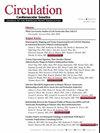FLNC (Filamin-C): A New(er) Player in the Field of Genetic Cardiomyopathies.
引用次数: 9
Abstract
In 1990, the Seidman group identified the first pathogenic cardiomyopathy mutation in a large 4-generation family, where several members were affected by hypertrophic cardiomyopathy.1 Since this first report, the number of genes and mutations associated with different cardiomyopathies is increasing from year to year. Currently, mutations in >170 genes associated with different cardiomyopathies, channelopathies, or syndromes with cardiac involvement are described. The huge number of different genes and mutations involved in cardiomyopathies limited routine genetic diagnostics for a long time. For example, Sanger sequencing of TTN, encoding the giant sarcomere protein titin, was difficult, expensive, and time consuming and limited the routine genetic diagnosis.2,3 Therefore, it was not surprising that the development of efficient next-generation sequencing technology pushed also the genetic diagnostics of cardiovascular diseases. Today, cardiovascular next-generation sequencing techniques are implemented in many diagnostic laboratories.4 The availability of next-generation sequencing technology has in the meantime provided the important insight that cardiomyopathies are remarkable heterogeneous disorders with different expressivity and penetrance. The challenges for the future remain the identification of phenotype–genotype relationships and consequences of genotyping for the development of personalized therapies. See Article Tucker and McLellan et al In this context, the contribution of a genetic pathogenesis to restrictive cardiomyopathy (RCM) is incompletely understood. Besides genetic factors, RCM might be a secondary cardiomyopathy and part of a systemic disease like the mineralization disorder pseudoxanthoma elasticum or cardiac amyloidosis. First mutations associated with familial RCM were identified in TNNI3 by the research group of William McKenna in 2003.5 During the …FLNC(丝蛋白- c):遗传性心肌病领域的新参与者。
本文章由计算机程序翻译,如有差异,请以英文原文为准。
求助全文
约1分钟内获得全文
求助全文
来源期刊

Circulation: Cardiovascular Genetics
CARDIAC & CARDIOVASCULAR SYSTEMS-GENETICS & HEREDITY
自引率
0.00%
发文量
0
审稿时长
6-12 weeks
期刊介绍:
Circulation: Genomic and Precision Medicine considers all types of original research articles, including studies conducted in human subjects, laboratory animals, in vitro, and in silico. Articles may include investigations of: clinical genetics as applied to the diagnosis and management of monogenic or oligogenic cardiovascular disorders; the molecular basis of complex cardiovascular disorders, including genome-wide association studies, exome and genome sequencing-based association studies, coding variant association studies, genetic linkage studies, epigenomics, transcriptomics, proteomics, metabolomics, and metagenomics; integration of electronic health record data or patient-generated data with any of the aforementioned approaches, including phenome-wide association studies, or with environmental or lifestyle factors; pharmacogenomics; regulation of gene expression; gene therapy and therapeutic genomic editing; systems biology approaches to the diagnosis and management of cardiovascular disorders; novel methods to perform any of the aforementioned studies; and novel applications of precision medicine. Above all, we seek studies with relevance to human cardiovascular biology and disease.
 求助内容:
求助内容: 应助结果提醒方式:
应助结果提醒方式:


